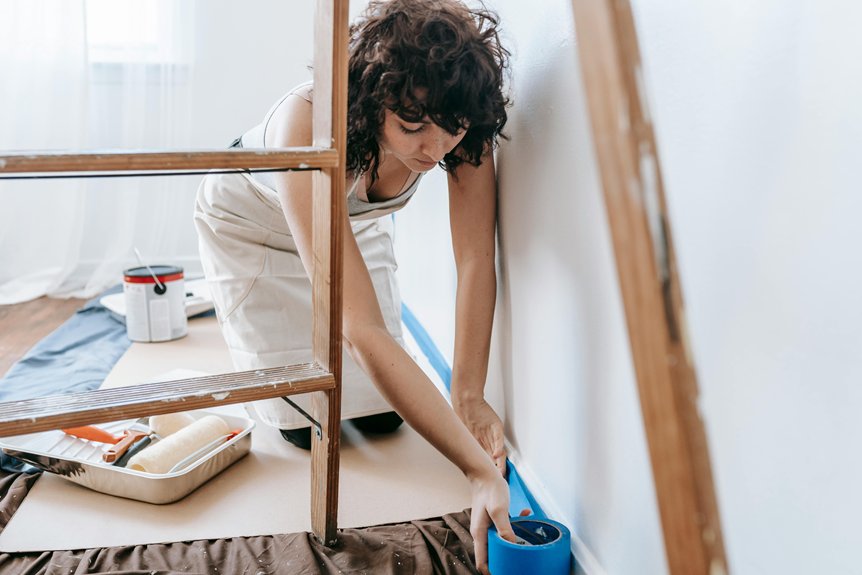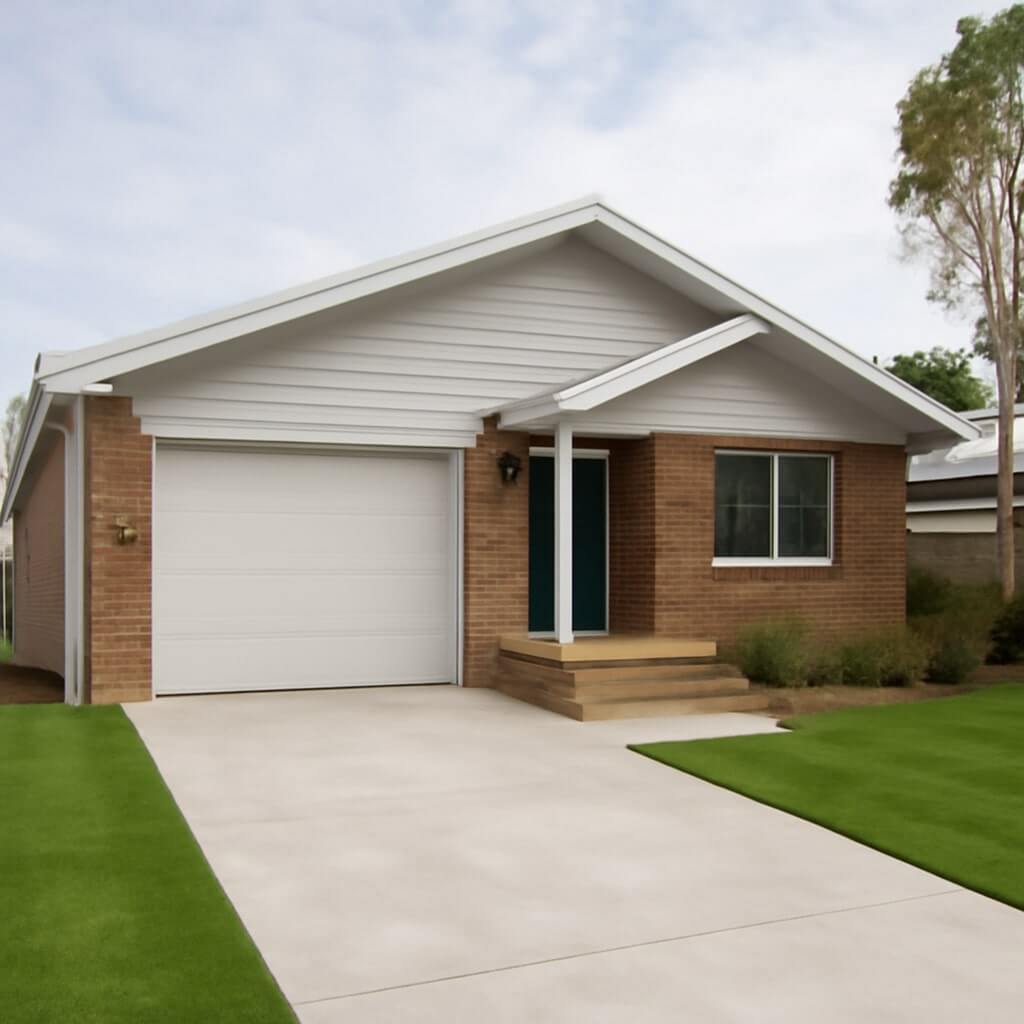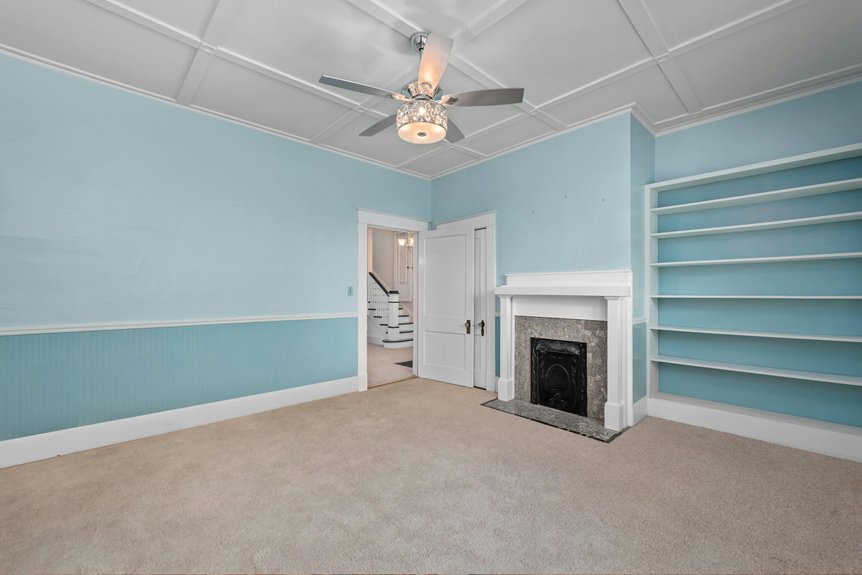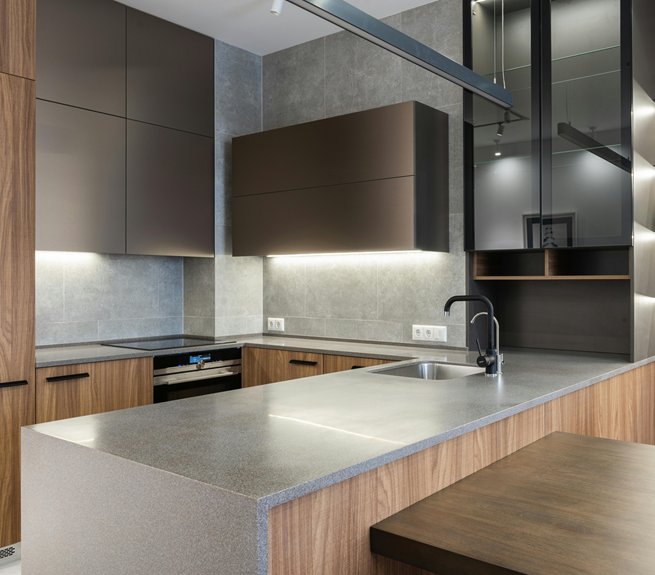When you commence a renovation of your modular home, understanding the unique aspects of these structures is vital. This guide offers essential tips and techniques to help you navigate your project with confidence. From setting clear goals to selecting sustainable materials, each decision impacts your home’s functionality and aesthetics. As you consider your options, remember that your choices can greatly enhance both comfort and value—so let’s explore the possibilities together.
Key Takeaways
- Define clear renovation goals focusing on functionality, aesthetics, sustainability, and budget to ensure project success.
- Utilize essential tools and sustainable materials to enhance efficiency and minimize waste during the renovation process.
- Optimize space layout and choose a cohesive color palette to create a functional and inviting environment.
- Enhance curb appeal with landscaping, outdoor lighting, and simple upgrades like a fresh coat of paint on the front door.
- Assess project complexity to decide between DIY or hiring professionals, and create a detailed timeline to track progress.
Understanding Modular Homes: Basics and Benefits

When you consider a modular home, you’re looking at a unique blend of modern construction and efficient design.
Modular technology streamlines the building process, allowing for quicker completion and reduced labor costs. These homes are crafted in sections, or modules, which are then transported and assembled on-site, minimizing waste.
Modular technology accelerates construction, reduces labor costs, and minimizes waste through efficient on-site assembly of pre-crafted sections.
Additionally, many modular homes utilize sustainable materials, promoting eco-friendly living. This approach not only lowers your carbon footprint but also enhances energy efficiency.
With customizable options, you can create a space that reflects your style while benefiting from the durability and innovation that modular homes offer.
Planning Your Renovation: Setting Goals and Budgets

Before you start your renovation, it’s essential to clearly define your goals and understand what you want to achieve.
Establishing a realistic budget will help you prioritize your needs and avoid unexpected expenses.
Additionally, consider your timeline to guarantee that your renovation aligns with your lifestyle and any upcoming plans.
Define Your Goals
How do you envision your ideal living space? Defining your goals is vital for successful renovation. Start by aligning your aspirations with practical renovation priorities.
Consider these key factors:
- Desired functionality (e.g., open concept or separate rooms)
- Aesthetic preferences (e.g., modern, rustic, or minimalist)
- Sustainability goals (e.g., energy-efficient materials)
- Space optimization (e.g., maximizing storage or natural light)
- Future-proofing (e.g., accommodating growth or lifestyle changes)
Establish a Budget
Establishing a budget is essential for a successful modular home renovation, as it sets the framework for your project and helps avoid unexpected costs.
Start with a detailed budget breakdown, listing all expected expenses, including materials, labor, and permits. Factor in a contingency for unforeseen issues—typically 10-20% of your total budget.
Explore renovation financing options, such as personal loans or home equity lines of credit, to guarantee you have the necessary funds.
Timeline Considerations
While it may be tempting to plunge into your modular home renovation without a clear timeline, doing so can lead to delays and increased costs.
To guarantee a smoother process, consider these essential timeline considerations:
- Define your renovation duration early.
- Set specific project milestones to track progress.
- Allocate time for unexpected issues.
- Schedule regular check-ins to assess timelines.
- Adjust goals and budgets as necessary.
Essential Tools and Materials for Your Renovation

Before you start your renovation, it’s vital to gather the right tools and materials.
You’ll need a solid toolkit and essential supplies to guarantee a smooth process, along with safety equipment to protect yourself.
Understanding what to prepare will set you up for a successful project from the outset.
Must-Have Tools
When starting on a modular home renovation, having the right tools at your disposal can make all the difference between a smooth project and a frustrating experience.
Here are some tool essentials that are renovation must-haves for your toolkit:
- Cordless drill
- Circular saw
- Tape measure
- Level
- Utility knife
Equipping yourself with these essential tools guarantees you’re prepared for various tasks, from framing to finishing touches.
Investing in quality tools not only enhances your efficiency but also contributes to the overall success of your renovation project, allowing you to work with confidence and precision.
Essential Materials
Having the right tools sets the stage, but without quality materials, your renovation plans can quickly fall flat.
Opt for sustainable materials that not only enhance aesthetics but also promote environmental responsibility. Bamboo flooring, recycled tiles, and low-VOC paints are excellent choices.
Additionally, explore cost-effective options like reclaimed wood or laminate that mimic more expensive materials without breaking the bank.
Remember, the materials you choose will greatly impact durability and maintenance in the long run.
Prioritize quality and sustainability to guarantee your renovation stands the test of time while staying budget-friendly. Your home deserves nothing less than the best.
Safety Equipment Needed
To guarantee a smooth and safe renovation process, investing in the right safety equipment is essential. Proper safety gear not only protects you but also guarantees that your project runs efficiently.
Here’s a list of must-have protective equipment for your renovation:
- Safety goggles to shield your eyes from debris
- Dust masks to prevent inhalation of harmful particles
- Hearing protection to guard against loud noises
- Hard hats to protect your head from falling objects
- Steel-toed boots for foot protection on the job site
Designing Your Space: Layout and Aesthetic Choices
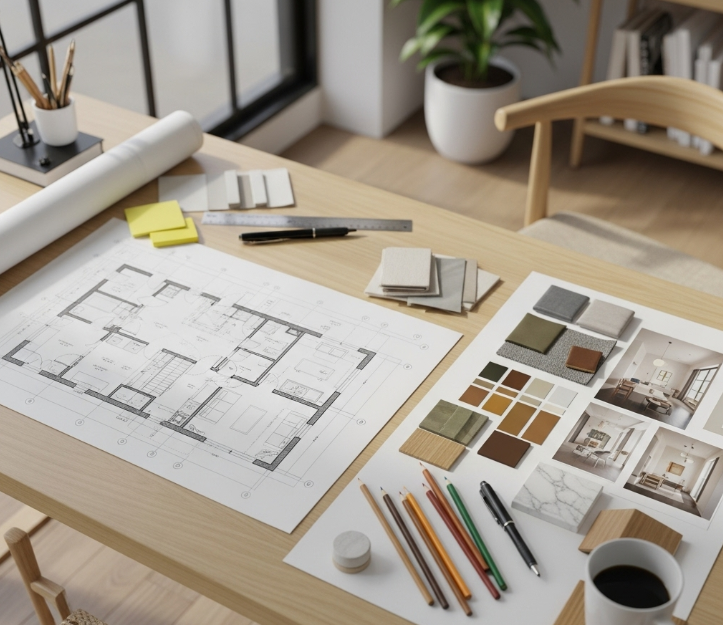
How do you envision your ideal living space? Start by considering layout optimization; think about how each room flows into the next.
Open layouts can enhance space and light, while defined areas create coziness. Choose furniture that serves dual purposes to maximize utility.
Open layouts boost light and space, while distinct areas add warmth; opt for multifunctional furniture to enhance utility.
Next, focus on aesthetic cohesion. Select a color palette that resonates with you—coordinating hues can tie your design together beautifully.
Incorporate textures and patterns that complement each other, bringing warmth and personality.
Structural Modifications: What You Can and Can’t Change
When you consider making structural modifications to your modular home, it’s vital to understand what changes are permissible and which ones might pose challenges.
Maintaining structural integrity is significant, so here’s what you should know:
- Load bearing walls can often only be modified with professional guidance.
- Foundation alterations may require extensive engineering assessments.
- Plumbing modifications must comply with local codes.
- Electrical upgrades should be handled by licensed electricians.
- Ceiling heights and window placements can be altered but may need renovation permits.
Always consult with professionals to guarantee compliance and safety during your renovation journey.
Energy Efficiency Upgrades: Saving Money and the Environment

While many homeowners focus on aesthetic upgrades during renovations, incorporating energy efficiency upgrades can greatly enhance both your comfort and your budget.
Consider solar panel installation to harness renewable energy sources, reducing your utility bills. Upgrading to energy-efficient appliances can save money while minimizing environmental impact.
Harness renewable energy with solar panels and save money by upgrading to energy-efficient appliances.
Don’t overlook insulation upgrades to maintain temperature and comfort, or smart home technology that optimizes energy usage.
Finally, choose sustainable materials that not only look good but also contribute to a greener home.
Interior Design Tips: Choosing Colors, Furnishings, and Decor
After enhancing your home’s energy efficiency, it’s time to focus on creating a space that reflects your style and meets your needs.
Consider these interior design tips:
- Understand color psychology for mood enhancement.
- Optimize furniture arrangement to promote flow and comfort.
- Explore various decor styles to showcase personal expression.
- Implement texture layering for depth and visual interest.
- Choose lighting carefully to accentuate key features and create ambiance.
Outdoor Enhancements: Curb Appeal and Landscaping Ideas

To truly elevate your modular home’s appeal, consider the impact of thoughtful outdoor enhancements that engage the senses and create an inviting atmosphere.
Start with landscaping techniques like layering plants for depth and incorporating native species for low maintenance. Add colorful flowers to your garden beds to enhance curb appeal and attract pollinators.
Consider a well-defined pathway leading to your entrance, framed by shrubs or ornamental grasses. Installing outdoor lighting not only highlights your home’s architecture but also enhances safety.
Finally, a fresh coat of paint on your front door can be a simple yet effective touch to complete the transformation.
Hiring Professionals vs. DIY: When to Seek Help

Enhancing your modular home’s exterior can set the stage for a stunning interior transformation, but deciding whether to tackle renovations yourself or hire professionals can be intimidating.
Consider your DIY skills and the professional qualifications required for various tasks.
Here are some guidelines to help you decide:
- Complexity of the project: Is it straightforward or intricate?
- Time constraints: Do you have enough time to commit?
- Skill level: Are you confident in your abilities?
- Budget considerations: Can you afford professional help?
- Safety concerns: Are there any risks involved?
Ultimately, weigh the benefits of hiring professionals against your own capabilities.
Conclusion
To summarize, transforming your modular home can be an enriching experience when you approach it with clear goals and a well-defined plan. By leveraging essential tools, sustainable materials, and thoughtful design choices, you can enhance both functionality and aesthetic appeal. Remember to weigh the pros and cons of DIY versus hiring professionals to guarantee your renovation journey is both successful and rewarding. Embrace the process, and watch your modular home evolve into a space that truly reflects your vision.

